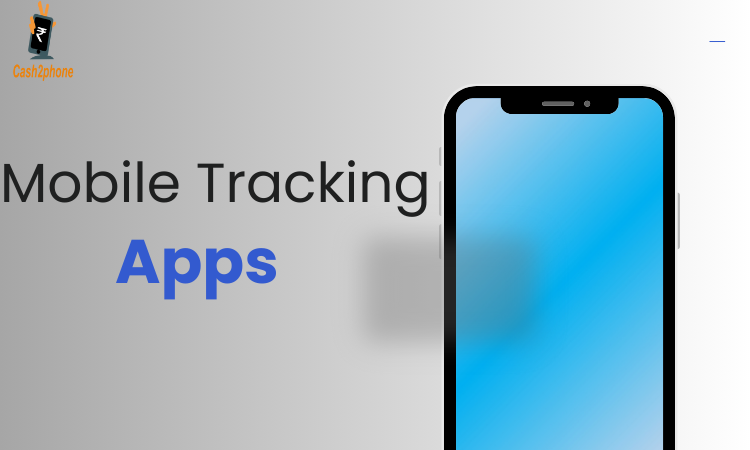Whether you’re a business owner seeking to optimize fleet operations or a parent concerned about your child’s safety, understanding mobile tracking methods empowers informed decisions. This guide explores the core technologies behind mobile tracking and their practical applications.
GPS Tracking: Pinpoint Accuracy for Real-Time Location
What is GPS Tracking?
Global Positioning System (GPS) is the foundation of mobile tracking. It utilizes a network of satellites orbiting Earth to transmit location data. GPS receivers in mobile phones, car navigation systems, and wearables use these signals to pinpoint a device’s location with high accuracy. This real-time data has numerous applications, making it a valuable tool across various industries.
Benefits of GPS Tracking

- Fleet Management: Businesses can track the location and movement of vehicles in real-time, optimizing routes, ensuring efficient operations, and improving driver behavior. (Consider linking to a blog post on “Benefits of GPS Fleet Tracking” if available on your website)
- Emergency Response: Emergency services can locate individuals in distress, facilitating faster response times and potentially saving lives.
- Personal Safety: Parents can use GPS tracking apps to monitor their children’s whereabouts, providing peace of mind.
Triangulation and Multilateration: Refining Location When GPS Signals Are Weak

While GPS offers exceptional accuracy, other methods come into play when GPS signals are weak or unavailable, such as indoors or in remote areas. Triangulation and multilateration are techniques that estimate a device’s location based on its connection to cell towers.
- Triangulation: This method estimates location by measuring the signal strength between a mobile device and several surrounding cell towers. It provides a general area rather than a precise location.
- Multilateration: A more sophisticated approach, multilateration uses the time it takes for signals to travel between a device and multiple cell towers to calculate a more accurate location.
When to Use Triangulation and Multilateration:
- Indoor Tracking: Since GPS signals struggle indoors, triangulation and multilateration help locate devices within buildings.
- Search and Rescue: These methods can assist in finding lost individuals when GPS is unavailable.
WiFi Positioning: Filling the Gaps for Indoor Tracking
WiFi positioning leverages the ubiquitous presence of WiFi networks to track devices. When a smartphone scans for nearby WiFi networks, it transmits its MAC address (a unique identifier) to these networks. Databases record the locations of access points, allowing the system to estimate the device’s location based on the detected WiFi networks.
Advantages of WiFi Positioning:
- Indoor Tracking: It effectively tracks devices within buildings where GPS signals are weak, making it ideal for location-based services in shopping malls, airports, or conference centers.
- Lower Cost: Utilizing existing WiFi infrastructure makes it a cost-effective solution compared to installing new tracking systems.
Limitations of WiFi Positioning:
- Accuracy: Accuracy can vary depending on the number and density of WiFi networks in the area. Sparse WiFi networks might result in less precise location estimates.
- Privacy Concerns: Some users might be concerned about sharing their device’s MAC address, even though it’s a non-personally identifiable identifier.
Also Read :- Maximizing Productivity with Your Smartphone: Top Apps and Hacks for Efficiency
Bluetooth Beacons: Enhancing User Experience with Location-Based Interactions
Bluetooth beacons are small devices that transmit radio signals containing unique identifiers. Smartphones with Bluetooth enabled can detect these signals, enabling location-based services and interactions.
How Beacon Technology is Transforming Industries:
- Retail Industry: Stores can use beacons to send targeted promotions or product information to customers’ smartphones as they browse the aisles, enhancing the shopping experience and potentially increasing sales.
- Museums and Exhibitions: Beacons can provide visitors with contextual information about exhibits as they approach them, creating a more engaging and informative experience.
- Asset Tracking: Beacons can be attached to equipment or inventory items, allowing for real-time tracking and management, improving operational efficiency and reducing loss.
Conclusion
Mobile phone tracking technologies offer a diverse toolbox for location-based services. From the foundational accuracy of GPS to the adaptability of WiFi positioning and the convenience of beacon technology, each method plays a crucial role. Understanding these methods empowers individuals and businesses to leverage the power of location data for improved efficiency, safety, and user experience. having an old phone with you ? don’t know what to do with that. dont worry sell old phone for cash at cash2phone website.



Leave a Reply